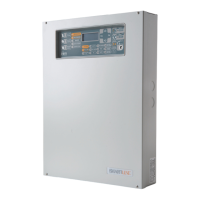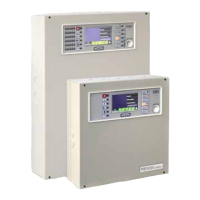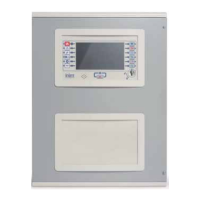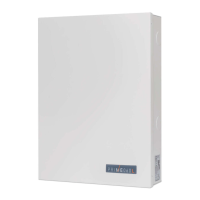
Do you have a question about the INIM Electronics SmartLine Series and is the answer not in the manual?
| Brand | INIM Electronics |
|---|---|
| Model | SmartLine Series |
| Category | Control Panel |
| Language | English |
Describes the application and primary uses of the SmartLine conventional fire control panel.
Details the various accessory items and components that work with the SmartLine system.
Lists and describes the different models available within the SmartLine fire alarm panel series.
Lists the manuals provided and details the SmartLine installation and programming manual.
Covers access levels, IP rights, disclaimers, safety laws, and device handling precautions.
Includes advice on testing, conventions, menu paths, and CE marking information.
Details product warranty, safety laws, and procedures for replacing and disposing of used devices.
Instructions for safe handling, storage, and environmental conditions for the device.
Steps for unpacking the main unit and a list of optional accessory items.
Detailed breakdown of external and internal parts of the SmartLine control panel.
Identifies main components on the SmartLine motherboard and their functions.
Illustrates the switching power supply connections for different SmartLine models.
Provides electrical specifications, dimensions, weight, and PCB current draw data.
Details the commands, access levels, and functions of the SmartLine panel frontplate buttons.
Explains the meaning of solid and blinking LED indicators on the control panel.
Describes signals related to the extinguishant board, including disablement and status.
Overview of the repeater panel, its active keys, and LED indicators.
Defines the meaning of solid and blinking LED indicators on the repeater panel.
Details the DIP switches, RS485 terminals, and EOL terminals on the repeater board.
Guides for mounting the control panel, expansion boards, and extinguishant module.
Detailed wiring diagrams and instructions for detection lines, I/O lines, and gas detectors.
Instructions for connecting diallers, RS485 BUS devices, and fault/alarm signalling outputs.
Guides for connecting RELAY, AUX, NAC outputs, and the extinguishant module.
Procedures for connecting mains power, batteries, and the thermal probe.
Procedure for checking wiring integrity and isolation before system power-up.
Diagrams and instructions for connecting a PC to the control panel via RS232.
Steps for powering up the control panel, including reset procedures and LED checks.
Details how to access programming mode and navigate through menu options.
Explains how to edit alphanumeric and numeric fields and manage variable fields.
Steps to configure the control panel, including acquiring bus devices and checking configuration.
Defines zone numbers, descriptions, and parameters for detection lines like FIRE ALARM, Det.Missing, etc.
Configuration options for I/O lines acting as outputs for various signals and conditions.
Details how to set up output operating modes and parameters for Relay and NAC outputs.
Defines timer intervals, dates, and special days for time-based system actions.
Configures holiday periods and general control panel options like delays and modes.
Explains how to define equations using operands and operators for advanced logic.
Procedure for configuring intervention thresholds for detection lines and I/O lines using a wizard.
Allows importing thresholds from a previously configured zone.
Diagram illustrating the operating principles of the gas extinguishant system activation.
Defines parameters for mask zone, mode, confirmation, pressure switch, and time settings.
Details how to configure detection lines and I/O lines for extinguishant board functions.
Instructions for including installed and addressed repeaters and power stations in the configuration.
Procedure to reset all programming data to default factory settings.
Introduction to the SmartLeague software for programming and system management.
Steps required to enable programming and data transfer via a PC connection.
Lists routine maintenance tasks, including LED tests and component checks.
Procedure to set or adjust the system's current date and time.
How to view real-time events on the display and access the chronological event log.
Explains Day/Night modes, silence, pre-alarm behavior, and manual/automatic mode switching.
Instructions for bypassing zones, dialler, or ALARM NAC outputs for maintenance or fault.
Procedures for testing zones and manually forcing the status of I/O lines configured as outputs.
How to set the date for the next maintenance and check the power supply voltage.
Troubleshooting steps for detecting open circuits or short-circuits on terminals.
Steps to diagnose and resolve faults related to repeater communication and addressing.
Guidance on diagnosing and resolving battery disconnected or low battery faults.
Explains meanings of messages like Dialler Fault, 24V output, Mains fail, Ground fault, and Maintenance.
Introduces Enea series devices, LPCB certification, and features of Iris detectors.
Lists Iris detector types, bases, call points, repeaters, and associated drivers/accessories.
Shows the reverse side of Iris detectors, highlighting serial number labels for tracing.









